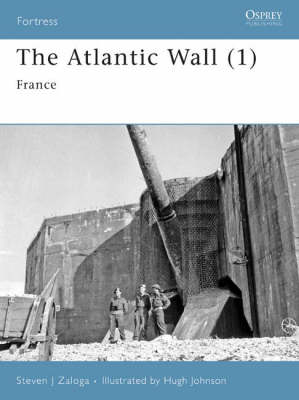Fortress
3 primary works • 4 total works
Book 37
The coastal defenses in Normandy along the D-Day beaches were less thorough than other Atlantic Wall defenses, such as the Pas de Calais, where the Germans expected the main attack. However, they still proved to be formidable obstacles for the Allied invasion force. Rommel stressed the need to defeat the invasion on the beach, and therefore the Normandy beach fortifications took on a significant role in German tactical thinking. This book covers the different levels of passive and active fortifications that were designed to stop the Allied assaults on the beaches of Normandy.
Book 72
Designed to change the course of the war, the V weapons required ambitious plans to defend their expensive and complicated launch sites. Steven J Zaloga describes the configuration and planned deployment of heavy missile sites, as well as the unique Allied tactics developed to counter this threat, including a remote-control version of the B-17 bomber. From the V-1 ski sites to the mobile basing employed by the V-2 units and the other secret weapons bases like the 'V-3' high-pressure gun at Mimoyeques, this book examines the impact of these weapon systems and defences not only on the war but on modern weaponry. With many of the sites described still surviving today, this is a perfect companion for a tour of the V weapon sites built during World War II.
Book 89
Germany's Atlantic Wall was the most ambitious military fortification program of World War II. Following its conquest of Western Europe, Germany had to defend some 5,000km of Atlantic coastline from the Spanish border to the Arctic Circle. The United States' entry into the war and the inevitability of an Anglo-American landing in Western Europe resulted in the fortification of this coastline along its entire length. Focusing on the northern Atlantic Wall in the Low Countries and Scandinavia, this title addresses the special defensive features and unique aspects of fortification in these countries, such as the early focus on fortifying Norway, due to early British commando raids; the greater use of turreted naval guns; and, the establishment of first-line Flak defences in the Low Countries to counter the Allied strategic bombing campaign.
v. 63
Germany's Atlantic Wall was the most ambitious military fortification program of World War II. With Germany's gradual loss of the strategic initiative to the Allies, in 1942 Hitler was forced to construct an impenetrable wall of fortifications along the Atlantic and Mediterranean coast. This book deals solely with the structures on the French coast, starting with the Pas-de-Calais and extending down to Spain. It features detailed illustrations and diagrams of the various sections of the Atlantic Wall and the role that they played, giving a thoughtful analysis of some of the most accessible fortifications of World War II.



